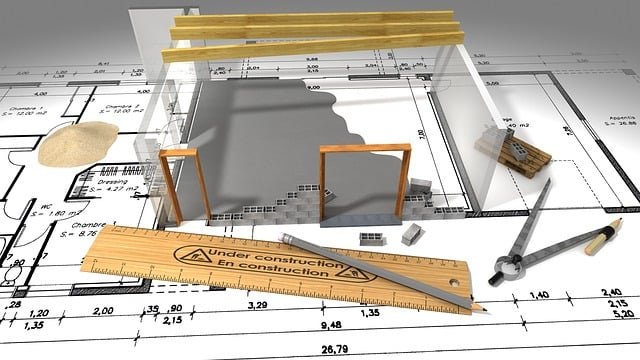How Can Unity Enhance Your Interactive Design Projects?
Imagine crafting a virtual environment where users can not only see but also feel part of the action. With Unity, you can create stunning 3D graphics that draw users in like a moth to a flame. It’s like painting a masterpiece, but instead of a canvas, you have a digital playground where every brushstroke comes alive. The intuitive interface allows you to experiment and iterate quickly, so you can focus on what truly matters: your creativity.
But it doesn’t stop there! Unity’s robust asset store is like a treasure chest filled with ready-to-use resources. Need a character model or a sound effect? Just a few clicks, and voilà! You’ve got what you need to enhance your project without starting from scratch. It’s like having a team of skilled artisans at your fingertips, ready to help you bring your ideas to life.
And let’s not forget about the community. Unity boasts a vibrant network of designers and developers who share tips, tricks, and inspiration. It’s like being part of a creative family where everyone is eager to help each other grow. You can learn from others’ experiences, troubleshoot issues, and even collaborate on projects, making the journey not just productive but also enjoyable.
So, if you’re looking to supercharge your interactive design projects, Unity is your go-to ally. With its powerful features, extensive resources, and supportive community, you’ll be well on your way to creating experiences that leave users in awe.
Unlocking Creativity: How Unity Transforms Interactive Design Projects
When you dive into Unity, you’re not just using a tool; you’re stepping into a vibrant playground where your ideas can run wild. The platform’s intuitive interface makes it easy to experiment, allowing you to bring your wildest concepts to life without getting bogged down by technical jargon. It’s like having a blank canvas where every brushstroke can morph into something extraordinary.
But what really sets Unity apart is its ability to foster collaboration. Picture a group of artists, each with their unique flair, coming together to create a masterpiece. Unity encourages this kind of teamwork, enabling designers, developers, and artists to share their visions seamlessly. You can bounce ideas off each other, tweak designs in real-time, and watch as your project evolves into something greater than the sum of its parts.
And let’s not forget about the immersive experiences Unity can create. Think of it as stepping into a storybook where you’re not just a reader but a character in the tale. With Unity, you can craft interactive environments that captivate users, making them feel like they’re part of the action. This level of engagement is what transforms ordinary design projects into unforgettable experiences.
So, if you’re looking to elevate your interactive design game, consider how Unity can be your creative catalyst, turning your visions into reality and unlocking a world of possibilities.
From Concept to Reality: The Power of Unity in Interactive Design
When you think about interactive design, it’s not just about flashy graphics or snazzy animations. It’s about creating a cohesive narrative that guides users through their journey. Picture this: you’re navigating a website, and every click feels intuitive, every transition smooth. That’s unity at work! It ensures that all components—colors, fonts, images, and layouts—speak the same language, making the experience not just enjoyable but memorable.
But how do we achieve this unity? It starts with a clear vision. Just like a painter envisions their masterpiece before the first stroke, designers must have a solid concept. This concept acts as a compass, guiding every decision. From choosing a color palette that evokes emotion to crafting interactive elements that invite engagement, every choice should align with that initial vision.

So, the next time you dive into a digital experience, take a moment to appreciate the unity behind it. It’s the invisible thread that weaves everything together, turning concepts into captivating realities.
Elevate Your Interactive Designs: The Unity Advantage Explained
Imagine crafting a virtual world where users can explore, interact, and immerse themselves in a story. With Unity, that dream becomes a reality. Its intuitive interface allows you to bring your wildest ideas to life without needing a PhD in coding. You can easily drag and drop elements, tweak settings, and watch your vision unfold right before your eyes. It’s like painting a masterpiece, but instead of a canvas, you have a dynamic digital landscape.
What’s more, Unity’s versatility is a game-changer. Whether you’re designing a mobile app, a VR experience, or even a simple web game, Unity has got your back. It’s like having a multi-tool that adapts to whatever project you throw at it. Plus, with a vast library of assets and plugins, you can save time and focus on what really matters—creating an unforgettable user experience.
And let’s not forget about community support. Unity boasts a thriving ecosystem of developers and designers who are eager to share tips, tricks, and resources. It’s like having a global brainstorming session at your fingertips! So, if you ever hit a snag, you can easily find solutions or inspiration from fellow creators.
In a world where user engagement is king, Unity stands out as a beacon of innovation. It empowers you to push boundaries and redefine what’s possible in interactive design. So, are you ready to take your projects to the next level? With Unity, the sky’s the limit!
Unity Unleashed: Revolutionizing Interactive Design for the Modern Creator
So, what makes Unity so special? For starters, it’s incredibly user-friendly. You don’t need to be a coding wizard to get started. With its intuitive interface, you can dive right in and start building your vision. Think of it as a blank canvas where you can paint your ideas without the fear of making a mess. Plus, the vast library of assets and plugins means you can find just about anything you need to enhance your project. It’s like having a treasure chest at your fingertips!
But it’s not just about ease of use. Unity is also a powerhouse when it comes to performance. Imagine creating a game that runs smoothly on both high-end PCs and mobile devices. That’s the beauty of Unity’s cross-platform capabilities. You can reach a wider audience without compromising on quality. It’s like casting a net that captures every fish in the sea!
And let’s not forget about the community. Unity boasts a vibrant ecosystem of creators who share tips, tricks, and resources. It’s like being part of a massive creative family where everyone is eager to help each other succeed. So, whether you’re looking for inspiration or troubleshooting advice, you’ll never feel alone on your journey.
In a world where interactive design is constantly evolving, Unity stands out as a beacon of innovation, empowering creators to unleash their full potential.
Designing the Future: How Unity Enhances User Engagement in Interactive Projects
So, how does Unity enhance user engagement? Picture this: you’re playing a game that responds to your every move, adapting to your choices in real-time. That’s the beauty of Unity’s real-time rendering capabilities. It creates immersive environments that draw users in, making them feel like they’re part of the story. When users can interact with their surroundings, it’s like stepping into a movie where they’re the star.
But it doesn’t stop there. Unity’s versatility means it’s not just for gaming. Think about educational apps or virtual tours. With Unity, learning becomes an adventure. Imagine exploring ancient ruins or diving into the ocean’s depths—all from your living room. This level of interactivity keeps users engaged, sparking curiosity and encouraging exploration.
Moreover, Unity’s user-friendly interface allows designers to focus on creativity rather than getting bogged down by technicalities. It’s like having a paintbrush that never runs out of ink. With a plethora of assets and tools at their fingertips, creators can whip up stunning visuals and seamless interactions that keep users coming back for more.
And let’s not forget about community. Unity boasts a vibrant ecosystem where developers share ideas, assets, and support. It’s like being part of a creative family, where collaboration fuels innovation. When designers come together, the possibilities are endless, leading to projects that not only engage but also inspire.
In a world where attention spans are fleeting, Unity stands out as a beacon of engagement, transforming how we interact with digital content.
The Unity Effect: Boosting Collaboration and Innovation in Interactive Design
When designers, developers, and stakeholders come together, magic happens. It’s not just about sharing ideas; it’s about building on each other’s strengths. Think of it as a potluck dinner—everyone brings their unique dish to the table, and together, you create a feast that’s far more delicious than any single dish could be. This collaborative spirit fosters an environment where creativity can flourish.
But how do you harness this Unity Effect? Start by encouraging open communication. Create spaces where team members feel comfortable sharing their thoughts, no matter how out-of-the-box they may seem. It’s like planting seeds in a garden; with the right care, those seeds can grow into something extraordinary.
Moreover, embracing diverse perspectives is crucial. When you mix different backgrounds and experiences, you get a rich tapestry of ideas. It’s like adding vibrant colors to a canvas—each hue enhances the overall picture, making it more dynamic and engaging.
In interactive design, this unity doesn’t just lead to better collaboration; it also drives innovation. When everyone is on the same page, brainstorming sessions become electric, and the ideas flow like a river. You’ll find that the best solutions often emerge from this collective energy, pushing the boundaries of what’s possible. So, if you want to elevate your design projects, remember the power of unity. It’s the secret ingredient that can transform your team’s potential into reality.
Crafting Immersive Experiences: Unity’s Role in Interactive Design Mastery
Think about it: have you ever played a game or used an app that felt so real, you almost forgot you were in front of a screen? That’s the kind of immersive experience Unity helps create. With its user-friendly interface and robust features, designers can easily manipulate 3D environments, integrate stunning visuals, and add lifelike physics. It’s like being a conductor of an orchestra, where every element harmonizes to create a symphony of interaction.
But what really sets Unity apart is its versatility. Whether you’re designing a virtual reality experience that transports users to another planet or an interactive educational tool that makes learning fun, Unity has the tools to make it happen. It’s like having a Swiss Army knife for creativity—everything you need is right at your fingertips.

So, if you’re looking to elevate your interactive design game, diving into Unity is a no-brainer. It’s where imagination meets technology, and the possibilities are as limitless as your creativity.
